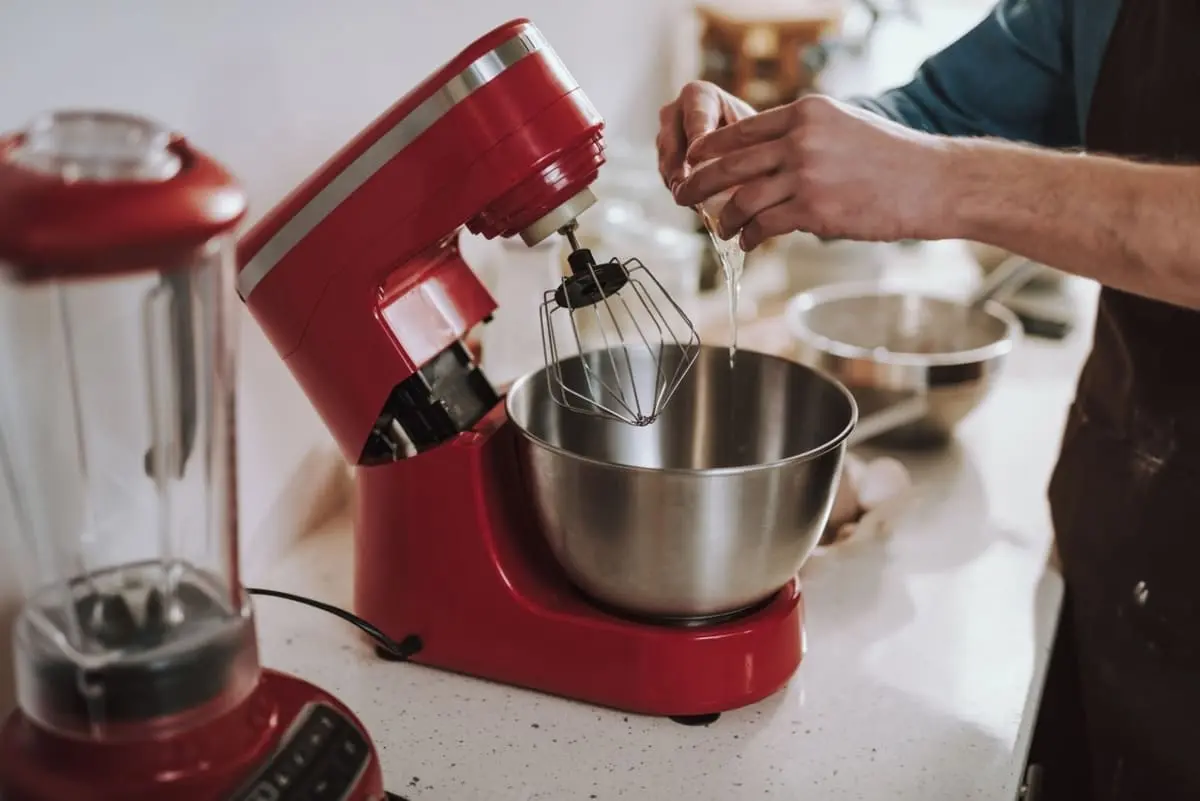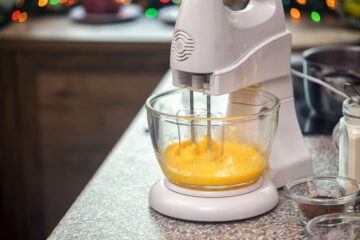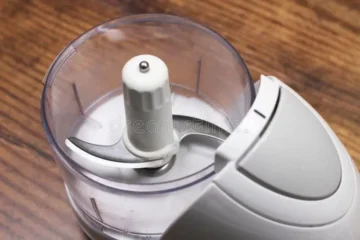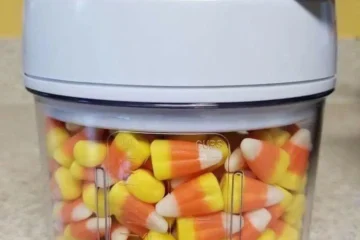Food processors and mixers are two essential appliances in any kitchen. While they both serve similar purposes, they have unique features and functions. Many of us wonder if we can use a food processor as a mixer or vice versa. It is our pleasure to explore some possibilities in this blog post. Can a food processor be used as a mixer? We’ll compare the functions of both appliances and determine if it’s possible to substitute one for the other.
This post will also highlight the pros and cons of using a food processor as a mixer and provide you with some tips and tricks to help you get the best results. If you have experience in cooking or are just starting in the kitchen, this post will help you make an informed decision on which appliance is best for you. So, if you’re ready to find out if a food processor can indeed be used as a mixer, let’s dive in!
Can A Food Processor Be Used As A Mixer?
Food Processor As A Mixer:
Yes, a food processor can be used as a mixer, but there may be more efficient and effective tools for certain tasks. Food processors are typically designed for chopping, blending, and pureeing ingredients, while mixers are designed for beating, whipping, and kneading.
So, a food processor may not be the best choice for tasks that require a lot of air to be incorporated into the mixture, such as making whipped cream or meringue. However, it can be a suitable alternative for simpler mixing tasks, such as combining dry ingredients or mixing cake batter.
What is the difference Between Food Processor And Mixer?
A food processor is a kitchen appliance that can chop, slice, grate, and puree ingredients. At the same time, a mixer is used to blend, beat, and whisk ingredients for baking and cooking. Food processors have larger capacities and more versatile functions. At the same time, mixers are typically designed for specific tasks, such as mixing dough or whipping cream. So, a food processor is more suitable for food prep tasks that require cutting and shredding, while a mixer is better for tasks that require blending and whipping.
Benefits, Disadvantages, And Limitations Of A Food Processor As A Mixer.
Benefits
Saves Time:
A food processor can save time by mixing ingredients quickly and efficiently.
Versatile:
A food processor can handle a variety of tasks, including mixing, chopping, slicing, and pureeing.
Uniform Mix:
It ensures a uniform mix, making it an ideal tool for mixing dough or making dressings and sauces.
Disadvantages
Limited Mixing Capacity:
A food processor has a limited mixing capacity, making it difficult to mix large quantities of ingredients.
Uneven Mixing:
It may not mix ingredients as evenly as a dedicated mixer.
Limited Control:
A food processor may offer a different level of control over mixing speed and intensity than a dedicated mixer.
Limitations
Not Suitable for All Recipes:
A food processor may only be suitable for some recipes, particularly those that require a delicate touch or precise mixing.
Can Overwork Dough:
A food processor can overwork the dough, resulting in tough baked goods.
May Require Special Attachments:
Some food processors require special attachments to mix certain ingredients or perform certain tasks.
The Reasons And Recommendations For A Food Processor To Be Used As A Mixer.
A food processor can be used as a mixer in certain situations. Still, there may be more efficient and effective methods. Here are some reasons and recommendations for using a food processor as a mixer:
Reasons to use a food processor as a mixer:
Convenience
If you don’t have a stand mixer or a hand mixer, a food processor can be a handy substitute for mixing certain types of dough or batter.
Time-saving
A food processor can mix ingredients quickly, which can be helpful when you’re in a hurry.
Multi-purpose
A food processor can also chop, puree, and grind food to be a versatile kitchen tool.
Recommendations for using a food processor as a mixer:
Use the pulse function
When using a food processor to mix dough or batter, it’s important to use the pulse function instead of running the machine continuously. This will help prevent overmixing, which can lead to tough, dense baked goods.
Don’t overfill the bowl
A food processor is designed to process small batches of food, so don’t overload the bowl when mixing ingredients.
Use the right blade or attachment
Use the standard “S” blade for most mixing tasks, but if you need to whip egg whites or cream, switch to the whisk attachment.
Be mindful of the heat
Food processors generate heat when they run, which can affect the texture of your dough or batter. If you’re making something that requires a delicate touch, like pie crust, consider chilling your ingredients before mixing them in the food processor.
How To Use A Food Processor As A Blender?
Using a food processor as a blender can be done by following these steps:
- Make sure your food processor has a blade suitable for blending liquids.
- Add the ingredients you want to blend into the food processor bowl, making sure not to fill it above the recommended level.
- Pulse the food processor a few times to start blending the ingredients, scraping down the sides of the bowl as needed.
- If necessary, add a small amount of liquid to help the ingredients blend.
- Blend the ingredients until you reach the desired consistency, using short pulses to avoid over-blending.
Can A Kitchenaid Mixer Be Used As A Food Processor?
Some Kitchenaid mixers can be used as a food processor with the appropriate attachment. Kitchenaid offers several attachments, including a food processor attachment, that can be used to chop, shred, slice, and puree food. However, it’s important to note that a Kitchenaid mixer is not a dedicated food processor and may not perform certain tasks as well as a standalone food processor.
Can A Stand Mixer Be Used As A Food Processor?
A stand mixer can be used for some food processing tasks, such as mixing and kneading dough, whipping cream, and mixing batters. However, it is designed to perform different functions than a food processor, such as slicing, chopping, or grating food. Some stand mixer models offer additional attachments that can expand their capabilities to include tasks such as grinding meat or making pasta. However, they still need to be a substitute for a dedicated food processor.
Can A Food Processor Be Used As A Blender?
A food processor and a blender are different kitchen appliances designed for different tasks. While a food processor can be used to perform some blending tasks such as mixing, chopping, and pureeing, it may not be suitable for tasks that require liquids or ice, such as making smoothies or crushing ice. So, a food processor can be used as a blender for some tasks, but it may not be as effective as a dedicated blender.
- How To Sharpen Food Processor Blades? (In 5 Easy Steps)
- How To Assemble A Cuisinart Food Processor? (From Scratch)
Can A Food Processor Be Used As A Juicer?
A food processor can be used to make juice, but there are more efficient ways to do so. Food processors are designed for chopping and pureeing food, while juicers are designed to extract juice from fruits and vegetables. While a food processor can help break down produce, it may only partially extract some of the juice, and the resulting juice may have more pulp or be less smooth than juice made with a juicer. A dedicated juicer is a better investment if you want to make juice regularly.
Food Processor Vs Blender Vs Mixer
A food processor is best for chopping, grating, and mixing dry or solid ingredients, like vegetables, cheese, and nuts. A blender is ideal for pureeing and blending liquids or semi-liquids, like smoothies, soups, and sauces. A mixer is designed for mixing and whipping batter, dough, and cream, like cakes and cookies. Each appliance has specific functions, and choosing the right one depends on the task you need to accomplish.
Food Processor Vs Stand Mixer For Dough
A food processor is better for making doughs that are low in gluten, such as pie crusts and shortbread, as it cuts the fat into the flour quickly and efficiently. A stand mixer is better for making doughs that are high in gluten, such as bread dough, as it can handle the prolonged mixing required to develop the gluten properly.
Food Processor Vs Mixer For Cookies
A mixer is better for making cookie dough because it allows for the thoroughly mixing and creaming of ingredients. A food processor can also be used for making cookie dough, but it may overwork the dough and result in tough cookies. However, a food processor can be useful for crushing ingredients like nuts or candy to add to the dough.
Why Use Both A Food Processor And A Mixer?
A food processor and a mixer have different functions and are designed to excel at different tasks in the kitchen. A food processor is typically used for tasks such as chopping, grinding, and shredding. At the same time, a mixer is designed for tasks such as mixing, whipping, and kneading.
Both appliances are useful for different types of recipes, and using both can help you save time and achieve better results in the kitchen. For example, a food processor can quickly chop vegetables for a soup or pie crust, while a mixer can make whipped cream or knead the dough for bread.
Overall Thoughts Food Processor As A Mixer
Overall, a food processor and a mixer are both versatile kitchen appliances with unique features and use. While a food processor can perform some tasks of a mixer, such as mixing dough and whipping cream, it is not a complete substitute for a dedicated mixer. Suppose you need more kitchen space or budget. In that case, a food processor can be a reasonable alternative to a mixer. Still, for specific tasks like making delicate cakes, you’ll need a mixer.
Ultimately, the choice between the two depends on the user’s specific needs and preferences. It’s essential to understand the differences and similarities between them to make an informed decision.
Frequently Asked Questions
Do You Need A Hand Mixer If You Have A Food Processor?
mixing, blending, and pureeing. However, a hand mixer is better suited for tasks that require incorporating air into a mixture or for smaller, more precise tasks.
Can You Cream Butter And Sugar In a Food Processor?
Yes, you can cream butter and sugar in a food processor. Still, it may achieve a different level of light and fluffy texture than creaming by hand or with a stand mixer. It is recommended to pulse the butter and sugar together until combined, but not overmix.
Can You Use A Food Processor To Mix Cake Batter?
You can use a food processor to mix cake batter. It is a quick and efficient way to mix ingredients, and it can help create a smooth and evenly mixed batter. However, it is important to keep the batter manageable to prevent tough cakes.
Can You Mix Dry Ingredients In A Food Processor?
Yes, you can mix dry ingredients in a food processor. A food processor is an efficient tool for mixing dry ingredients quickly and evenly. It’s important to pulse the food processor gently to avoid over-mixing or creating a fine powder.
Can You Mix Ice Cream In A Food Processor?
It is possible to mix ice cream in a food processor. Using a food processor to mix ice cream allows you to customize and create new flavors. Be sure to use a food processor with a large enough capacity and freeze the bowl beforehand for optimal results.
What Can I Use Instead Of A Food Processor?
ingredients. However, it may not be as effective for chopping or shredding.



